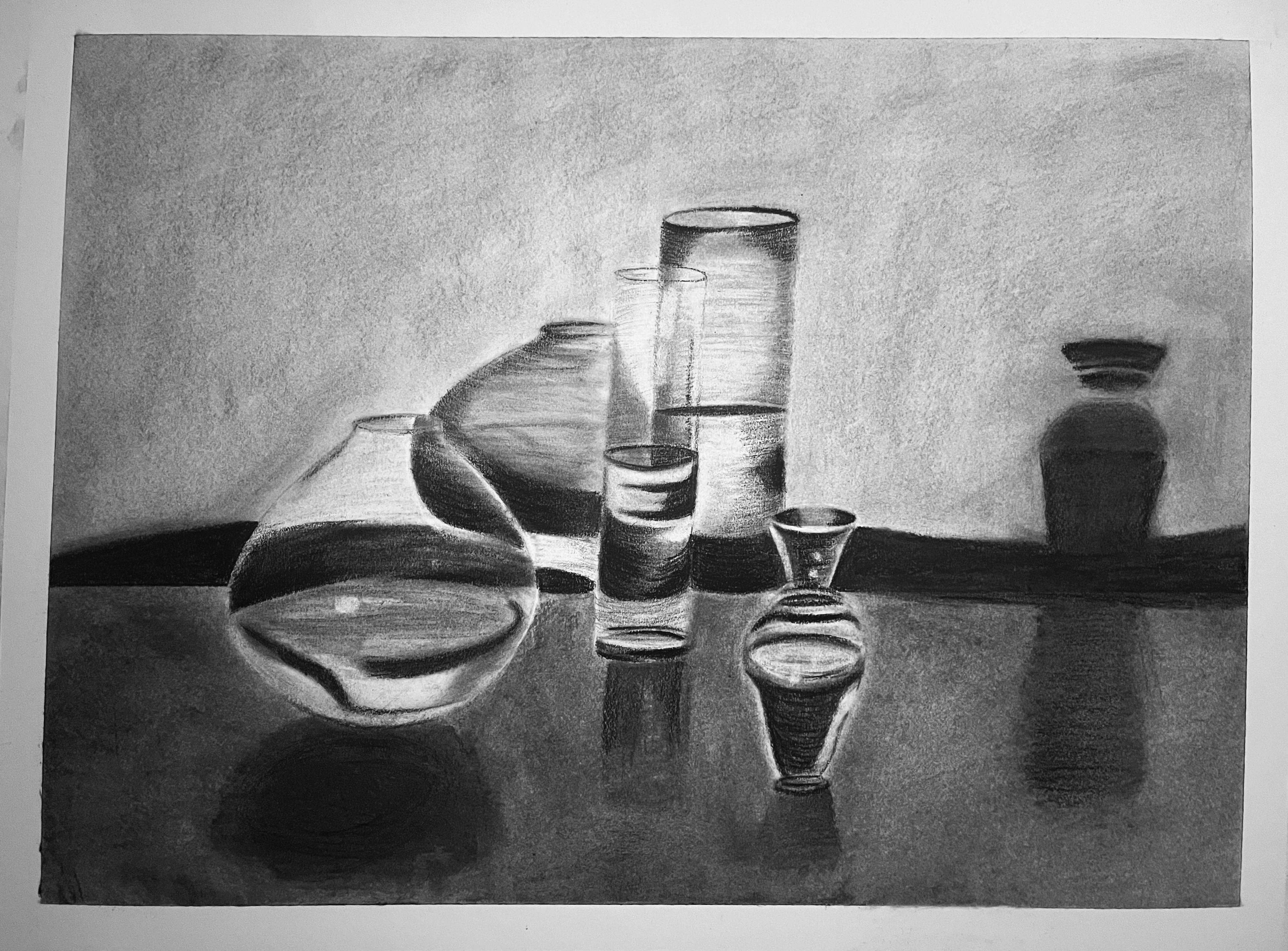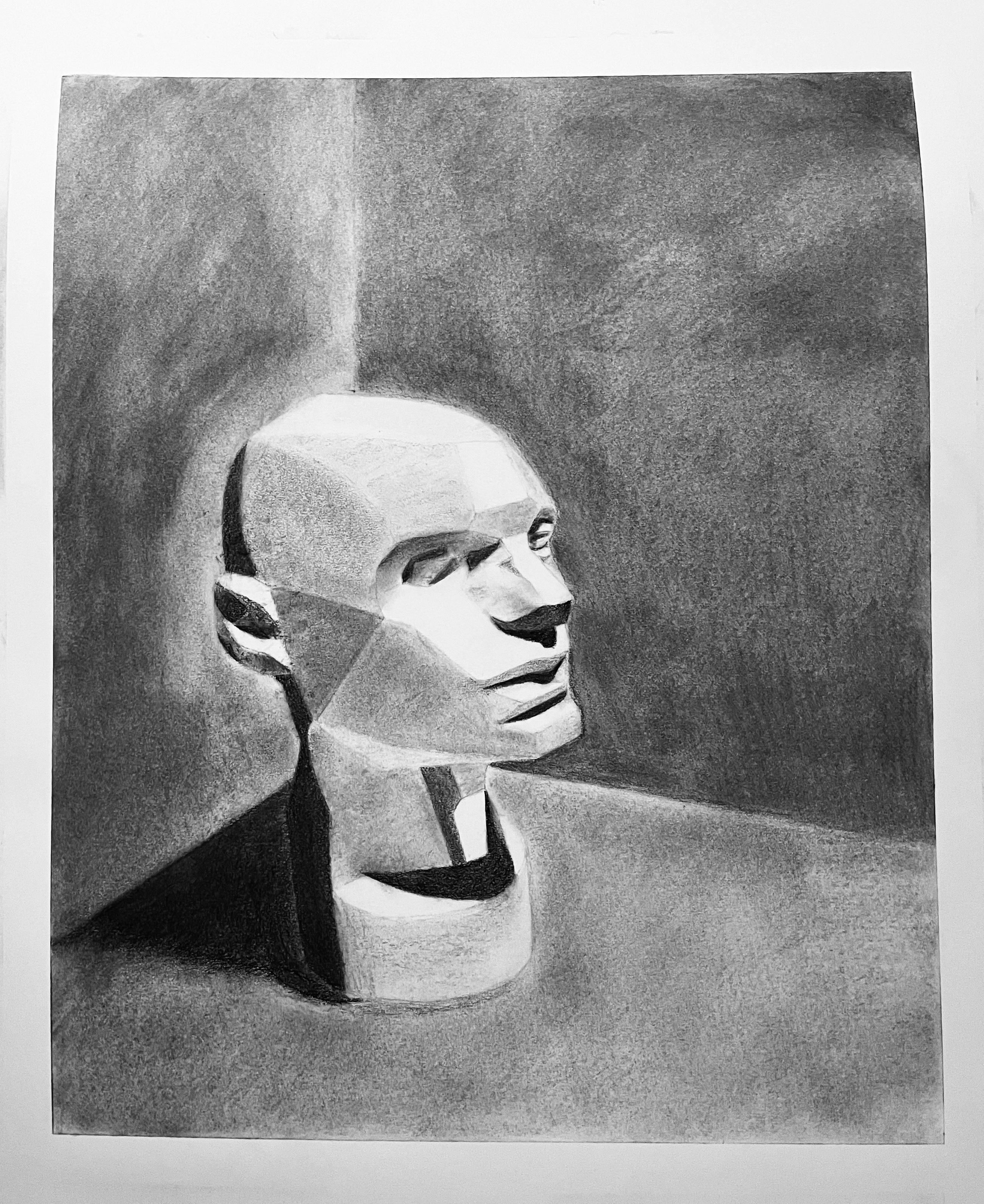
What you’ll paint
A 5×7–8×10 study on panel or canvas. We’ll design 3 big shapes (sky, land, focal mass), nail their values, and add subtle warm/cool shifts to bring it to life.
Palette & surface
- Titanium white, ultramarine blue, burnt umber, yellow ochre, alizarin (or quinacridone), cad yellow light.
- Panels/canvas: lightly toned (neutral gray or warm earth).
- Solvent-free medium or minimal OMS; paper towels, palette knife.
Setup & value plan
- Pick a simple reference with clear light direction.
- Thumbnail a 3-value map (light, mid, dark) before painting.
- Stand back often; paint bigger to use your shoulder.
Step-by-step
Block-in drawing
With a thin umber wash, place horizon and big shapes using straight, simple lines. Keep it adjustable.
Establish big values
Mix average color notes for sky/land/focal. Get the value right first; chroma comes second.
Temperature shifts
Cooler distance, warmer foreground. Shift hue slightly within each mass to avoid chalkiness/muddiness.
Edges for depth
Soften far edges; sharpen and add texture at the focal area. A few crisp accents go a long way.
Unify & accent
Glaze or scumble lightly to unify planes, then place the darkest dark and brightest light where you want the viewer’s eye.
Tips
- Mix larger puddles than you think you need to avoid constant remixing.
- Keep brushwork purposeful—change brush size for planes vs details.
- Reserve impasto for light accents; thin paint in shadows.
Troubleshooting
- Muddy color: Too many strokes—wipe, remix cleanly, lay once with confidence.
- Flat depth: Edges all equal—soften distance, sharpen focal plane only.
- Chalky lights: Value too light or too cool—add a touch of warm to the mix.
